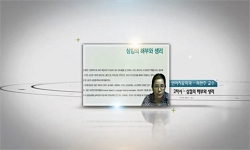Purpose: To investigate the effect of botulinum A toxin (BTXA) chemodenervation in paralytic strabismus patients withoutsurgical correction. Methods: A retrospective chart review of 51 patients who were diagnosed as paralytic strabismus and underwent ...
http://chineseinput.net/에서 pinyin(병음)방식으로 중국어를 변환할 수 있습니다.
변환된 중국어를 복사하여 사용하시면 됩니다.
- 中文 을 입력하시려면 zhongwen을 입력하시고 space를누르시면됩니다.
- 北京 을 입력하시려면 beijing을 입력하시고 space를 누르시면 됩니다.
https://www.riss.kr/link?id=A108022201
- 저자
- 발행기관
- 학술지명
- 권호사항
-
발행연도
2022
-
작성언어
-
- 주제어
-
KDC
510
-
등재정보
SCOPUS,KCI등재
-
자료형태
학술저널
-
수록면
60-65(6쪽)
- DOI식별코드
- 제공처
-
0
상세조회 -
0
다운로드
부가정보
다국어 초록 (Multilingual Abstract)
Purpose: To investigate the effect of botulinum A toxin (BTXA) chemodenervation in paralytic strabismus patients withoutsurgical correction. Methods: A retrospective chart review of 51 patients who were diagnosed as paralytic strabismus and underwent BTXA chemodenervationwas performed. The patients were divided into four groups according to the cause of paralytic strabismus ofvasculopathy, neoplasm, trauma, and idiopathic. They were also divided into two groups of early and late treatment accordingto the initiation time of BTXA chemodenervation after the onset of strabismus (3 months), and of the initial strabismustype of exotropia and esotropia. We investigated the changes of angle of deviation and diplopia after BTXA chemodenervation. Results: The average deviation of angles decreased by 25.2 prism diopter (PD) (35.1 to 9.9 PD) in total patients, and the overallsuccess rate was 64.7% (33 by 51), and the there was no statistically significant difference in success rate between eachgroup divided by the cause of paralytic strabismus. According to the treatment timing, the deviation of the angle decreasedby 28.0 PD (36.8 to 8.8 PD) in the early treatment group, and 21.3 PD (33.5 to 12.2 PD) in late treatment group at the time ofthe last postinjective follow-up. According to the initial strabismus type, the average angle of deviation decreased by 20.3 PD(35.6 to 15.3 PD) in exotropia group by cranial nerve 3 palsy, and 24.4 PD (32.5 to 8.1 PD) in esotropia by cranial nerve 6 palsy. Conclusions: BTXA chemodenervation reduced the angle of deviation and the number of patients with diplopia regardless ofthe cause of paralytic strabismus. Early BTXA chemodenervation can be considered as the first treatment of choice in paralyticstrabismus, especially in esotropia patients.
목차 (Table of Contents)
- Materials and Methods Results Discussion Conflicts of Interest Acknowledgements Funding References
- Materials and Methods Results Discussion Conflicts of Interest Acknowledgements Funding References
동일학술지(권/호) 다른 논문
-
- 대한안과학회
- Do Wook Kim
- 2022
- SCOPUS,KCI등재
-
- 대한안과학회
- Naresh Babu
- 2022
- SCOPUS,KCI등재
-
Relapsed Disciform Stromal Herpetic Keratitis Following mRNA COVID‐19 Vaccination: A Case Report
- 대한안과학회
- 편집부
- 2022
- SCOPUS,KCI등재
-
- 대한안과학회
- Jeong Woo Park
- 2022
- SCOPUS,KCI등재






 KCI
KCI 스콜라
스콜라



